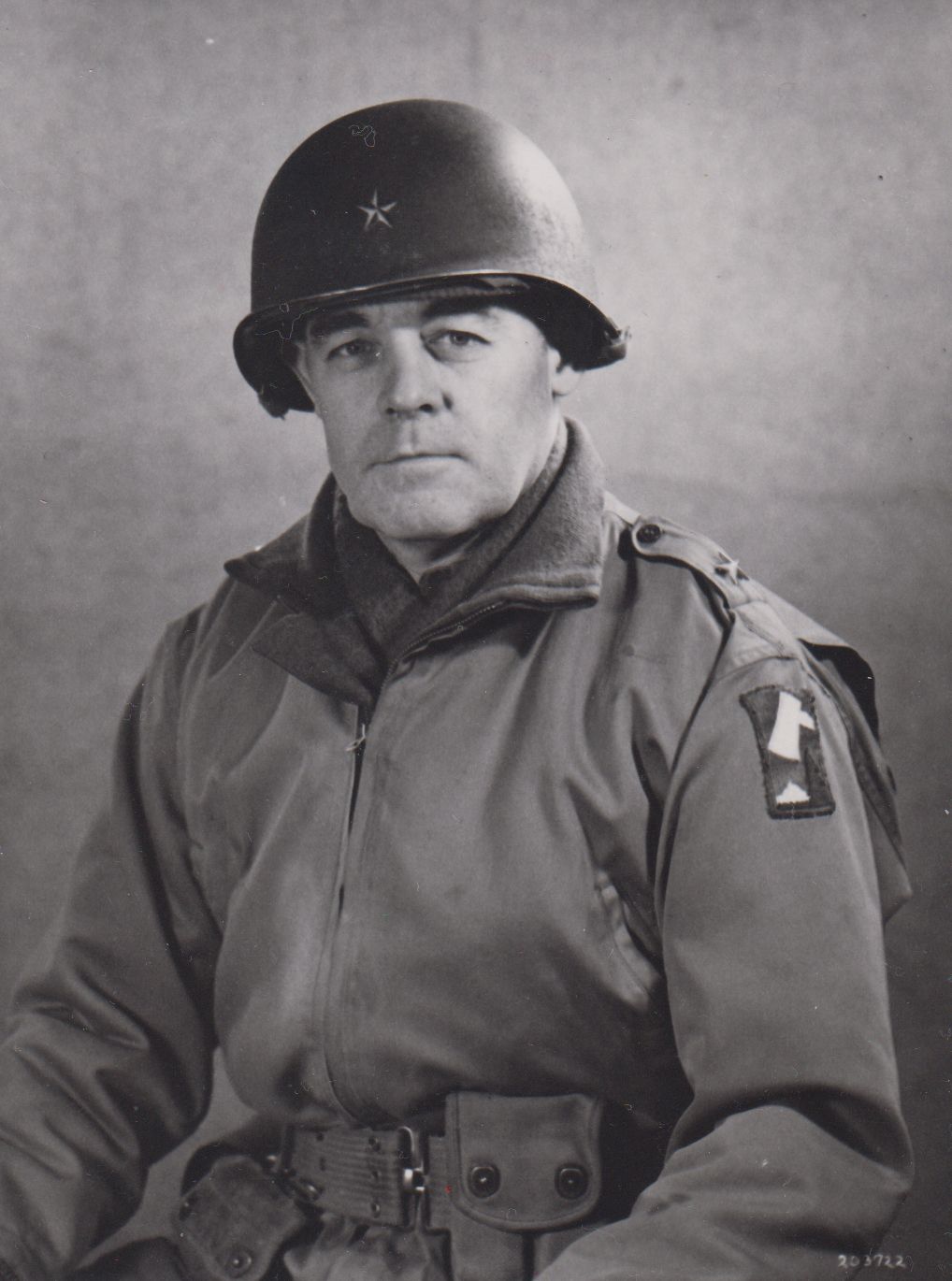US Army Lieutenant General. A combat commander whose military career spanned World Wars I and II and the Korean War, he rose in rank to become Commanding General of the 1st US Army. After graduating from Tallapoosa County High School in Alabama in 1914, he attended the University of Alabama at Tuscaloosa, Alabama and graduated in 1917. He briefly taught high school in Gadsden, Alabama and then entered US Army's Officer Candidate School at Fort McPherson, Georgia and was commissioned a 2nd lieutenant in August 1917 and assigned to Fort Bliss, Texas in the field artillery. He was then assigned to France with the 78th Field Artillery Battalion as its executive officer and later its commander. Following Germany's surrender in November 1918, he remained in Europe as part of the occupational force. After returning to the US, he served as a recruiting officer in Springfield, Massachusetts. From 1926 through 1942 he served in different cavalry assignments and attended professional Army schools, along with a tour in Gatlinburg, Tennessee as organizer of the Civilian Conservation Corps camps in the Great Smoky Mountains National Park. In 1942, following the US entry into World War II, he was promoted to the rank of colonel and assigned to the US Army's 106th Cavalry Regiment at Camp Livingston, Louisiana. In 1943 he became Commandant of the US Army's Cavalry School at Fort Riley, Kansas and was promoted to the rank of brigadier general the following year and joined the 70th Infantry Division at Fort Leonard Wood, Missouri. In December 1944 he was sent to Marseilles, France where he saw combat action with the 7th US Army in the Alsace-Lorraine region and later along the Rhine River as part of Operation Nordwind, and remained in Germany briefly following their surrender in May 1945 as part of the Occupational Force. When he returned to the US, he became the Chief of Staff for Operations of the US 4th Army at Fort Sam Houston, Texas. In 1946 he was assigned to Korea at the US Army's 24th Corps Chief of Staff and remained there until late 1949 when he became 2nd Brigade Commander for the US Army's 1st Cavalry Division in Tokyo, Japan. In 1950 he returned to the US and became the Chief of Special Services with the Secretary of Defense in Washington DC, and was promoted to the rank of major general. He was then made Commander of the Military District of Washington. In 1952 he became the Deputy Commanding General of the 8th US Army and assigned to Korea, followed by Commanding General of the Korean Communications Zone, where he oversaw the transfer of prisoners of war on both sides. In 1953 he was assigned to Frankfurt, Germany as Commanding General of the newly established US Army Europe Northern Area Command. In 1954 he returned to the US, promoted to the rank of lieutenant general, and became Commanding General of the 1st US Army at Fort Jay, Governors Island, New York and he retired at that position in July 1957 with 40 years of continuous military service. Among his military decorations and awards include the Army Distinguished Service Medal, the Legion of Merit, the World War I Victory Medal, the post-World War I Army of Occupation Medal, the American Defense Service Medal, the American Campaign Medal, the European-African-Middle Eastern Campaign Medal, the World War II Victory Medal, the post-World War II Army of Occupation Medal, the National Defense Service Medal, and the Korean Service Medal. Following his military retirement, he worked in the private sector until 1967. He died at his home in Washington DC at the age of 89.
Source: Find a Grave

PRIVATE CITIZENS SUPPORTING AMERICA'S HERITAGE
American
War Memorials Overseas, Inc.
War Memorials Overseas, Inc.
Herren Thomas Wade
Name:
Thomas Wade Herren
Rank:
Brigadier General
Serial Number:
Unit:
70th Infantry Division
Date of Death:
1985-06-04
State:
Alabama
Cemetery:
Arlington National Cemetery Arlington, Arlington County, Virginia
Plot:
Section 7A, Site 161
Row:
Grave:
Decoration:
Army Distinguished Service Medal
Comments:
